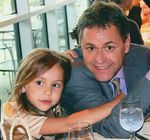By Dr. Ken Broda Bahm:

I have a five-year-old daughter (stay with me, it’s relevant), and every night, just as she is going to bed, I tell her a story, creating each tale in impromptu fashion. I’ve been doing this for as long as she’s been able to understand what I’m saying (and probably a little longer). We do this after the books are done, so I can’t just rely on published help, and I can’t just tell her any old Grimm or Mother Goose tale either. It has to be original and created just for that night — no repeats. She gives me a character and a setting (e.g., a bear who wants to be president), and I have to just go with it. If that sounds like an exercise from a storytelling workshop, that is pretty much what it is. What enables me to do this night after night is not a wild imagination, nor is it just the inspiration provided by my (extraordinarily cute and creative) kid. What gets me through is a reliance on a bit of knowledge about narrative structure. That is, I draw from a well-established yet simple series of steps that a story needs to go through in order to be understood and appreciated as a story.
First, I need to set a scene and flesh out some characters (so, we meet the bear who aspires to the oval office, and I resist the urge to name him “Romney the Bear”). Then, I need to introduce a conflict or a problem (Let’s say the bear has great ideas for the country, but keeps scaring off the moderator and audience when he shows up for the candidate’s debate). Then, I need the final step to send the child off to dreamland: a crisis and resolution that brings the story to a close (Hmm, the debate is invaded by a swarm of angry bees, and bear saves the day by scaring them away — everyone takes a fresh look at what the bear can offer). Okay, so I won’t be winning a Newberry medal for children’s literature, but it does work, and works for a reason that should matter to litigators. Keeping an an eye toward the basic structural elements of a narrative is critical to telling the kind of stories jurors will want to hear and retain. Most litigators understand that they need to tell a story, but for too many, the knowledge stops there. They’ll arrange the events in a sequence, but omit some of the parts (chapters; beginning, middle, and end; conflict and resolution) that help us see it as a story. This post takes a look at the ways a little knowledge about narrative structure can help attorneys tell better and more involving stories.
The Scene: A Need to Both Involve and Influence in Court
While the rational legal model would say that jurors and other fact finders don’t need a story about the facts, they just need the facts. The problem with that is the facts don’t motivate and engage, the facts don’t create a framework of their own, and the facts don’t organize themselves in a memorable or influential fashion. In short, as Eric Oliver (2006) has noted, the facts can’t speak for themselves. An adversary system expects that the advocates on both sides won’t just present, they’ll persuade. And a first step to persuasion is getting an audience to follow your view of what happened and what should happen. Even mathematics is more understandable as “story problems” framed in the narrative mode that tracks with our most basic way of understanding the world. Thanks to some research (e.g., Spiecker & Worthington, 2003) and a lot of CLE’s, most lawyers now understand that they need to tell a story, and I’d wager the vast majority of trial lawyers believe that they are telling a story in opening and through testimony. But there’s often a problem with that.
The Obstacle: A Nominal Allegiance to Narrative
Lawyers get it, but not always in a deep way. That is, once immersed in the facts and the super-structure of claims and defenses, the litigator may fail to appreciate that a story is more than just sequence. It is possible to present one’s case by taking the facts and arranging them chronologically, walking through the timeline, sharing a series of events with “and then” inserted in between. That can convey the feeling of moving forward through time in a story-like manner, but without the recognizable signposts of a narrative, it really isn’t a story and doesn’t function as one. Think about simply narrating your most recent trip to the grocery story (you parked, got a cart, got tomatoes, then bread, then coffee…then paid and left). Yes, it is a chronology, but there is no situation, no conflict, no resolution. Just sequence without story. The same can occur in trial, particularly in complex or commercial litigation where we don’t have the clear story elements that stand out in a personal injury case, for example. The result that we see is that, in many cases, lawyers believe they’re telling stories, but jurors aren’t hearing them as such. In mock trials, for example, the jurors we watch in deliberations are often creating the stories on their own instead of reacting to those presented by attorneys. But that isn’t inevitable. There is a way for attorneys to exercise greater control over the stories jurors end up with.
The Triumph: A Deeper Appreciation of Narrative Structure
If you can’t identify discrete chapters, then you probably aren’t telling a story. At the simplest level, a story is as Aristotle said, “a whole” that “has a beginning and middle and end” (Poetics). Aristotle called these the protasis (the introduction or first act that sets the scene), the epitasis (the main action building to a climax), and catastrophe (the final resolution, where everything is unraveled or put back together again – depending on whether it’s a comedy or a tragedy). You’ll recognize this as the structure of my headings above. While it is the simplest way to tell a recognizable story (and it works great for five-year-olds), it isn’t the only way.
There are about as many models for narrative structure as there are literary theorists, which is to say, a lot. Even sticking with the ancients, we could add a section called the chorus to each of those three steps. The Greeks used that to provide the voice of a third party onlooker to describe the proper response to these events, whether to be happy or sad for example. It is easy to see a role for that in the trial story, as an expert witness or those who work or live with a plaintiff provide that third party reaction. This chorus role reminds us that what makes a story is not just what happened, but how we should feel about what happened. For those who want to go further, there is also the notion of the dénouement, coming at the end or just after the climax, providing a return to normalcy or, appropriate to the legal setting, a righting of the scales of justice. If the central events leading to the lawsuit provide the story’s climax, then perhaps the verdict is the dénouement. This also provides the central insight that jurors should have a positive role in the story: They aren’t just onlookers, they’re there to create justice or prevent its miscarriage, whether for plaintiffs or defendants.
Of course, that just scratches the surface of the need for narrative structure. I’ve also written that structure can be nonlinear — you can begin at the end of the story, or at some other key point. Perspective, or the question of who is telling the story, also matters and you can overlap multiple stories as a guard against hindsight, for example. But beyond all of these strategic considerations, the heart of the advice is this: Make sure your sequence is recognizable as a story, because those story elements provide touchstones that anyone can recognize, even my five-year-old daughter. If I just relied on a description of the bear, or if I just narrated a normal day in the woods, or if I just shared reason upon reason why this bear should be president — in short, if I just conveyed information without a clear beginning, middle, and end — the reaction would be predictable: “Daddy, that isn’t a story.”
Other Posts on Legal Storytelling:
- Your Opening: Tell It Like a Story, but Tailor It Like a Strategy
- Find the “Universal Morality” in Your Case Story
- Don’t Put “Story” on Too High a Pedestal
- Talk to the Eyes: If It Can’t Be Visualized, It’s Not a Story
______
Photo credits: tedeytan, Flickr Creative Commons (lead picture), Kerry Langel, MJ Expressions Photography (closing picture)
